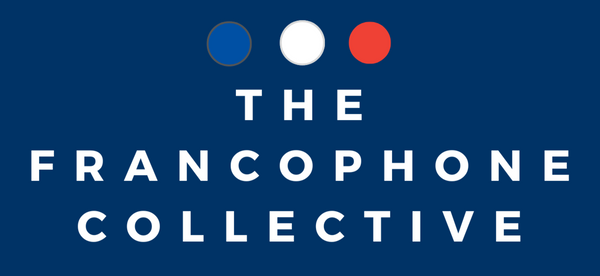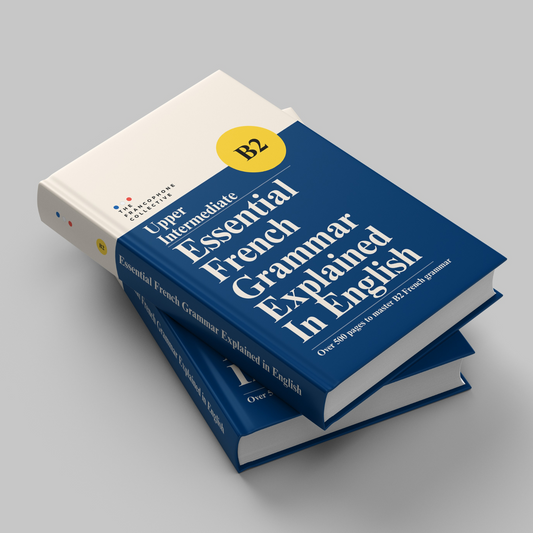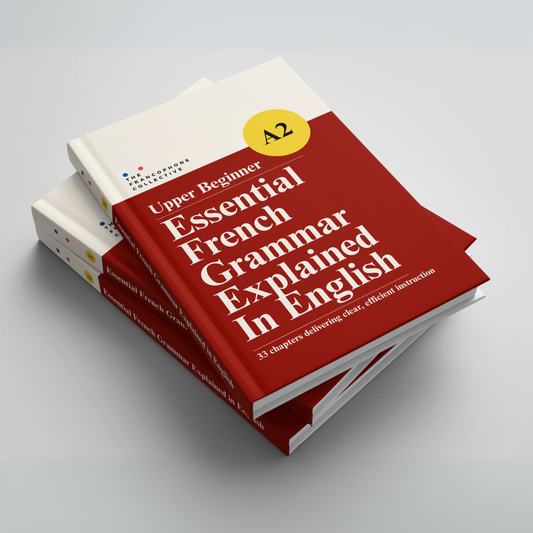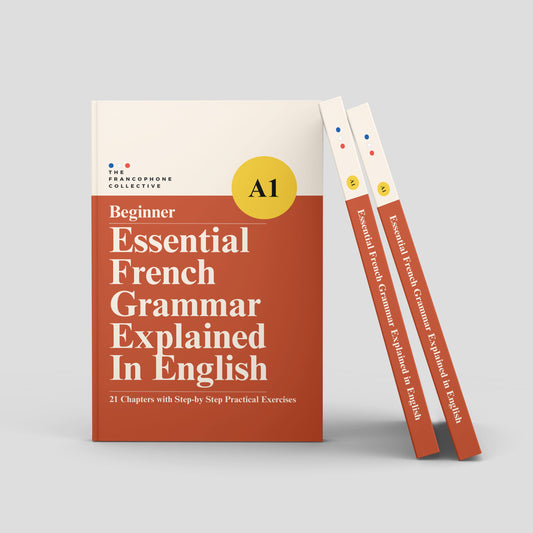
Why we created the Essential French Grammar Explained in English series
When we set out to create the Essential French Grammar Explained in English series, we weren’t trying to reinvent French grammar. We were trying to make it make sense—specifically, for English-speaking learners.
What we quickly realised is that no one else was doing that.
This is the only French grammar series designed entirely for English speakers, with each book aligned to CEFR levels (A1, A2, B1, B2) and written in plain, accessible English. It bridges the gap between French pedagogy and English comprehension, helping adult learners understand why grammar works—not just memorise it.
See also: CEFR French Levels Explained: What does A1, A2, B1, B2, C1 and C2 Really Mean
Why French Grammar Can Be Taught in English
There’s a persistent myth in language learning that you should avoid using your mother tongue. But study after study proves otherwise—especially for adult learners.
According to Language Teaching Research (2022), learners who receive grammar explanations in their native language retain more, understand faster, and apply concepts more confidently than those taught exclusively in the target language.
Another report from the European Commission confirms that learners benefit from being able to compare grammar rules between languages — especially when tackling concepts that don’t exist in English.
That’s exactly what our series is built to do.
A Dual-Team Approach: French educators, Anglophone Editors
Each book is developed by French educators who bring years of classroom experience and deep subject knowledge. But we don’t stop there.
Every single chapter is reviewed by native English-speaking editors—language lovers, writers, and grammar nerds—who comb through each sentence to ensure clarity, flow, and accessibility. Their job is simple: if it doesn’t make sense to an English speaker, it doesn’t go in the book.
This collaborative process ensures that:
- Explanations are accurate and easy to follow.
- Examples sound natural, not robotic or overly translated.
- The tone feels human, helpful, and respectful of your time.
The result? Lessons that are grammatically sound, pedagogically robust, and actually understandable.
See also: How long does it take to be fluent in French?
What Makes This Series Different
Most grammar books fall into two categories:
-
Recycled translations of French grammar guides, with clunky explanations and assumptions that you already understand concepts like “participle agreements” or “imparfait vs passé composé.”
- Over-simplified workbooks that teach rules without context, leaving you to guess how to actually apply them.
We created something different:
A series that walks you through the logic of the language in English, respects your intelligence, and supports your learning journey chapter by chapter.
Each book includes:
- CEFR-aligned grammar lessons for your level
- Detailed prose-based explanations
- Clear, structured examples with English translations
- Practice exercises rooted in real-life usage
- Full answer keys for independent learning
Built for Real Learners—Not Just Classrooms
Whether you’re self-studying, returning to French after years away, or trying to finally grasp the grammar that classes skipped over, this series is for you. It’s written by people who’ve been in your shoes and edited by people who know what clarity sounds like.
The Only One of Its Kind
To this day, the Essential French Grammar Explained in English series remains the only French grammar collection that:
- Covers each CEFR level individually (A1 to B2)
- Is written in English for English speakers
- Is co-developed by French educators and Anglophone editors
- Uses a structured, narrative approach rather than isolated rule lists
- Was created with the real learner—not the imagined classroom—in mind
If you’re tired of patchworking your grammar knowledge through random YouTube videos and fragmented worksheets, this is your complete, cohesive solution.
Sources:
-
Ellis, R. (2022). Explicit Grammar Instruction in the L1: Benefits for Adult Language Learners. Language Teaching Research.
-
European Commission (2020). Key Data on Teaching Languages at School in Europe.




